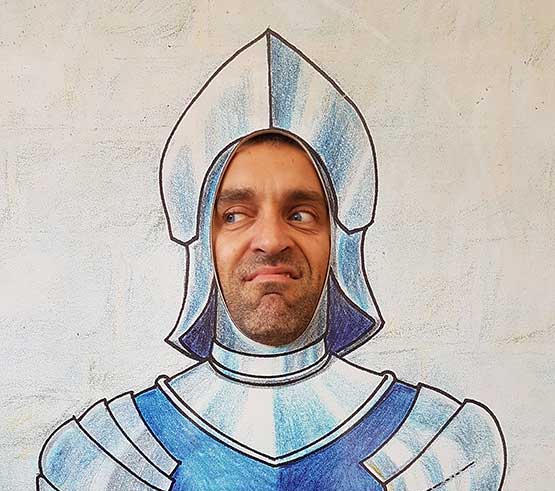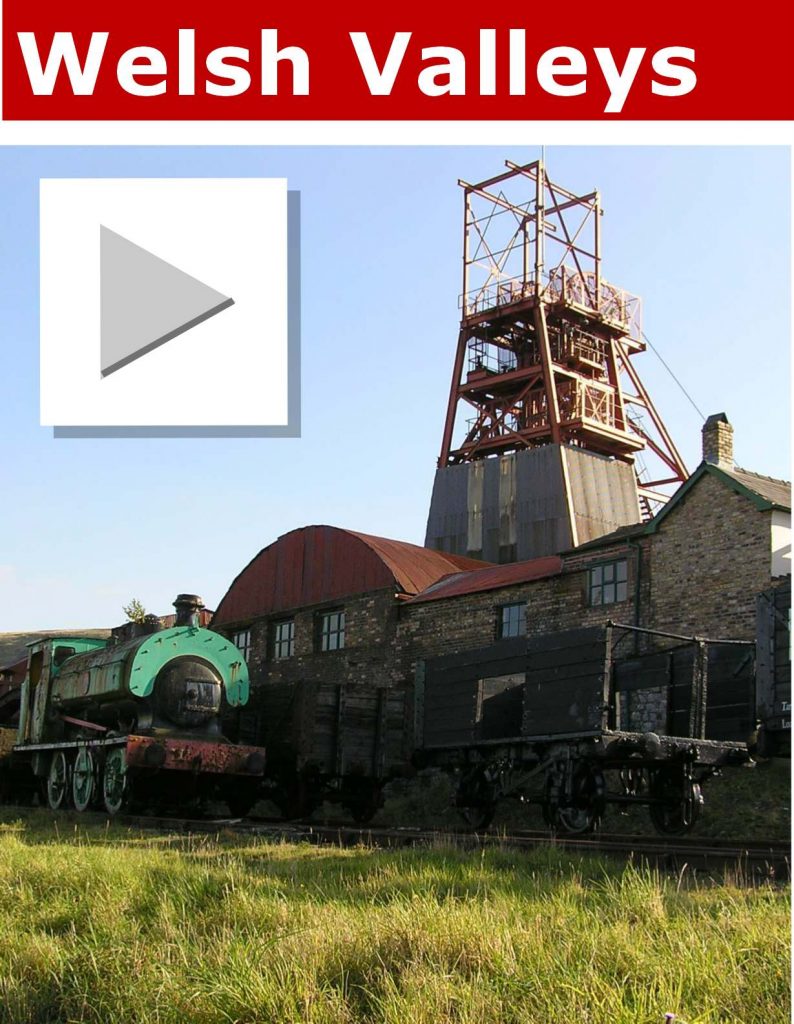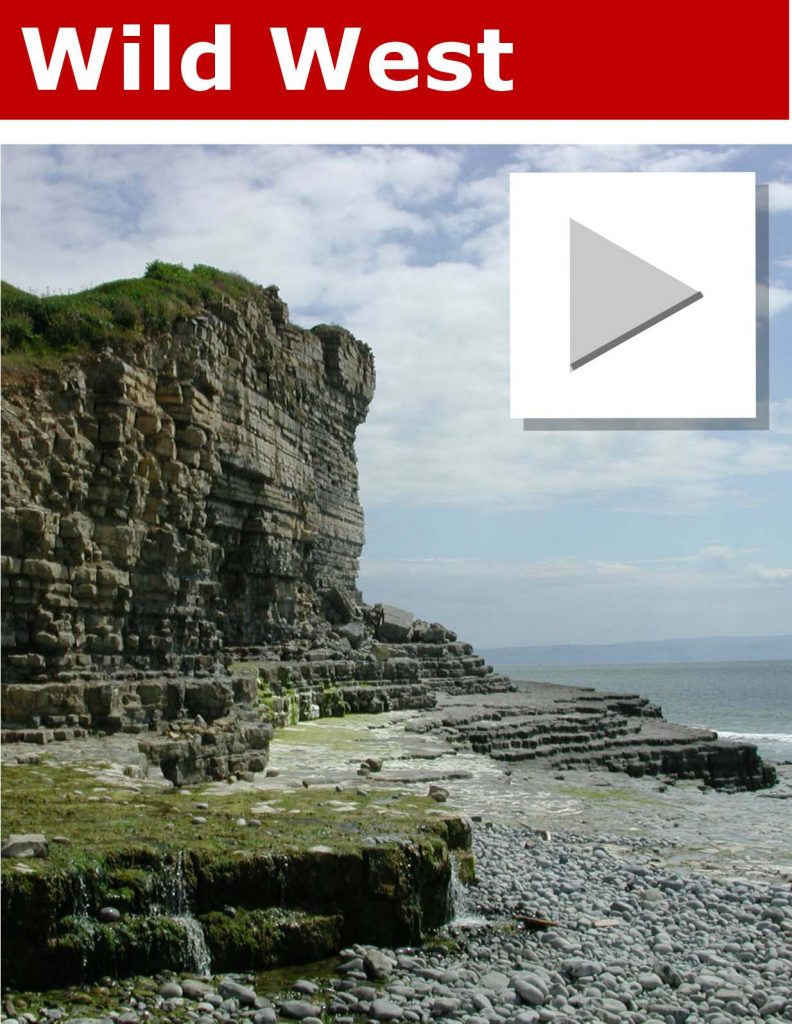
History
Chepstow Castle was built in the years immediately following the Norman invasion by William FitzOsbern, who was one of the key supporters of William I. FitzOsbern had been instrumental in persuading the Norman Barons to support the invasion of England and he was rewarded with the title Earl of Hereford which included extensive lands including Chepstow. The grant was also a pragmatic decision by William I who wanted one of his most reliable allies in a position to secure the southern portion of the border (known as the March) and suppress any threat from Wales. Concurrently two other magnates were granted the Earldoms of Shrewsbury and Chester to control the central and northern Marches. All three Earls were permitted to build castles as required to secure their new territory and FitzOsbern constructed a number of fortifications along the River Wye at Chepstow, Monmouth and Hereford. This waterway was an important means of movement through the area and the fortifications ensured FitzOsbern had complete control and freedom of manoeuvre across the region. It is likely the castle constructed at this time was an earth and timber ringwork fort as the cliffs overlooking the River Wye made any motte superfluous. However, FitzOsbern didn’t live long enough to enjoy the fruits of his loyalty as he was killed in 1071 at the Battle of Cassel.
FitzOsbern’s son was Roger de Breteuil who inherited his father’s extensive estates but forfeited everything when he participated in an attempted coup against William I in 1075. Chepstow, along with other castles built by FitzOsbern, were taken into Crown ownership. It was probably at this time work started on the Great Tower; a stone built hall that would have dominated the castle and could have served as Royal accommodation. However, although William I visited South Wales in 1081, he never appears to have visited his property at Chepstow.
In 1115 Henry I granted Chepstow to Walter de Clare. During the Anarchy, the civil war between Stephen and Matilda over the English succession, the de Clares supported Stephen’s claim to the throne. When Matilda’s son ascended the throne as Henry II, the family found themselves out of favour. Relations didn’t improve when Richard (‘Strongbow’) de Clare defied Royal orders and invaded Ireland in 1170. However, Richard died without male heir in 1176 and Chepstow passed to his young daughter, Isabella. As a minor, she was made a Ward of the King and her estates were taken into State care. She was later betrothed to William Marshal (later Earl of Pembroke) – a knight of modest background who had made his fortune in the French wars and by successful participation in tournaments. Marshal became a trusted ally of Henry II and showed incredible loyalty even in the old King’s later years; in particular, fighting against the future Richard I when he rebelled against his father. Despite their differences, when Richard I became King in 1189, Marshal was granted permission to marry Isabella de Clare which immediately made him one of the wealthiest and most powerful magnates in the Kingdom. Marshal went on to serve loyally to both Richard and his successor, King John. During the latter’s reign he acted as John’s advisor and chief negotiator as Magna Carta was devised. Upon King John’s death in 1216, he assumed the title of Regent of England during the minority of Henry III. During his tenure Marshal made numerous improvements to Chepstow including adding the twin-towered gatehouse.
The male line of the Marshal family ended in 1245 and the vast properties accumulated were split between various descendants. Chepstow passed to Maud who married Hugh Bigod, Earl of Norfolk. Their son and grandson, both of whom were named Roger Bigod, took the title Earl Marshal and held Chepstow Castle until 1306. During this period the town wall was built enclosing the land approaches to Chepstow town. However, although the period saw significant Anglo-Welsh fighting ultimately culminating in the Welsh Wars of Independence, it seems construction of the town wall may have had more to do with tax than defence. The residential facilities at Chepstow Castle were also upgraded at this time as the castle became the main residence of the Bigod family. The upgrades included improvements to the staterooms and enlargement of the Great Tower. Roger Bigod the younger died childless in 1306 so the castle passed to the Crown. It remained in Royal ownership until 1324 when Edward II granted it to his unpopular favourite, Hugh Despenser the younger. However, just two years later the Edwardian government was overthrown by a successful coup led by Queen Isabel and Roger Mortimer, Earl of March. Edward II and Hugh Despenser fled to Chepstow Castle, which had seemingly been provisioned for a siege, but ultimately decided to flee rather than risk being trapped inside. However, they were both captured – Despenser was executed and the King deposed, imprisoned and probably murdered at Berkeley Castle.
In 1399 Chepstow Castle was granted to Thomas Mowbray, Earl of Norfolk by Henry IV. The following year saw the start of the Owain Glyndŵr rebellion prompting Thomas to provision the castle for war. However, the Welsh advance was checked at the Battle of Pwll Melyn (1405), outside the walls of Usk Castle, and accordingly Chepstow was not attacked. The castle continued to be garrisoned throughout the fifteenth century and briefly saw action during the Wars of the Roses. After the Battle of Edgecote (1469) – in which Yorkist Royalist forces had been defeated by the Yorkist rebel, Richard Neville, Earl of Warwick (‘the Kingmaker’) – two of the defeated fugitives sought safety within the fortification. The two individuals – Richard Woodville, Earl Rivers and Sir John Woodville – were both members of the Queen’s family and hated by Neville. Arriving outside of Chepstow’s walls, he demanded the castle’s immediate surrender. Unwilling to provoke such an important magnate, the garrison of the castle surrendered to him without a fight. In a vicious act of revenge that had become the norm for the war, Neville had both Woodvilles summarily executed.
During the Tudor era numerous modifications were made to Chepstow to convert the castle into a comfortable lodging. However, it was hastily reactivated in the seventeenth century during the Civil War and garrisoned by the Royalists. They dominated Wales for the early years of the conflict but, by Autumn 1645, the King was clearly losing the war and Parliament started encroaching into Monmouthshire. In October 1645 Parliamentary forces under Sir Thomas Morgan besieged Chepstow Castle. They bombarded the castle and ultimately compelled the garrison to surrender. The castle avoided subsequent slighting but in 1648, during the second Civil War, it was seized and held by the Royalist Sir Nicholas Kemeys. Forces under Oliver Cromwell, who were en route to besiege Pembroke Castle, bombarded Chepstow Castle causing significant damage. The garrison surrendered and Kemeys was summarily executed.
After the restoration of the monarchy in 1660, Chepstow Castle was retained in Royal ownership. Artillery was installed and the castle also served as a prison for political dissidents. Most prominent amongst these was the Republican politician and regicide Henry Marten who was held at Chepstow after periods of imprisonment at Lindisfarne Castle, the Tower of London and Windsor Castle. Chepstow was granted to Henry Somerset, Marquis of Worcester in 1667 but he preferred to live at Monmouth Castle. Accordingly Chepstow was neglected and by the late seventeenth century it was little more than a depot for discarded and out-dated weaponry. It drifted into ruin and was never rebuilt. More recently the castle was used as the location for the 1913 film version of Ivanhoe.




